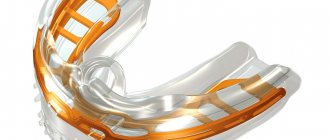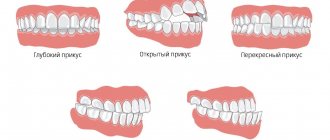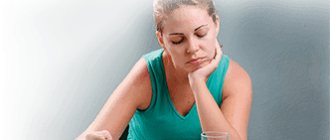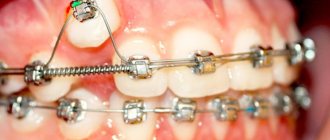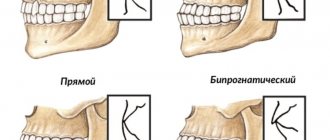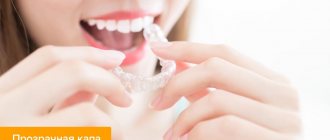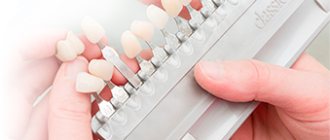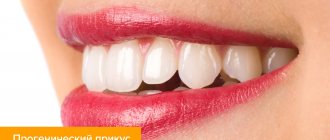Bite in dogs, the types of which can be different, is one of the points in assessing the animal. Unfortunately, the pet does not always meet the required standard due to incorrect positioning of the teeth. In such cases, it is better to consult a specialist - it is quite possible that everything can still be corrected. It is recommended to pay attention to the animal’s teeth and bite in order to detect the problem in time.
Correct bite is the basis for the health of your furry pet
Main types of bite
There are several types of bite patterns in dogs. They depend on the breed of the animal. Main varieties:
- scissor-shaped - is normal,
- pincer-shaped - the second name for straight,
- undershot,
- snacking is more common in bulldog-shaped dogs.
Depending on the dog's breed, the structure of the jaws, their length and development may vary.
However, sometimes a distortion in the structure of the facial bones is possible. Attention! A dog's bite is also affected by teeth - they can grow incorrectly, which is why various pathologies arise.
Prevention
Malocclusion is not always a congenital genetic feature. In most cases, simple preventive measures will help avoid this defect. We will talk about these measures further.
First of all, you need to pay attention to the proper nutrition of your pet. It is important to ensure that his diet contains enough calcium, vitamin D3 and other important microelements. Dry food must be selected strictly according to the age category of the animal. If you feed your puppy natural food, take care of additional vitamin and mineral supplements.
Bring your dog to the veterinarian regularly. This issue should be given particular importance when baby teeth are replaced by molars. During this period, the bite is often disturbed due to captive baby teeth: therefore, if necessary, the latter are removed. Sometimes the dog's chewing of hard toys and objects can help the rapid loss of baby teeth.
If your puppy has started to develop an incorrect bite, a rubber ring installed by a veterinarian will help correct the situation at an early stage. It is only important not to let the situation take its course, and take measures to correct the problem as early as possible.
Attention : all preventive measures should be taken when the dog is still a puppy: the earlier, the better.
So, we have learned what a correct bite in dogs is, and how such a defect can be eliminated. As you can see, the incorrect position of the teeth has a negative impact not only on the dog’s appearance, but is also harmful to its health. Pay attention to the position of your pet’s teeth, and be sure to contact a competent veterinarian in a timely manner if there is a need to correct the bite.
Currently reading:
- Thyroid dysfunction in dogs (hypothyroidism)
- Seven Signs and Remedies for Getting Rid of Fleas in Dogs
- How to recognize signs of dog poisoning from rat poisons
- Ways to manage parvovirus infection in dogs
Scissor bite
Dogs have always been considered predatory animals. To survive, wild representatives have to constantly hunt. Their jaws are designed to grab and then hold prey. Therefore, a scissor bite is considered the most correct.
A similar structure is diagnosed in almost all dogs. Thanks to a scissor bite, teeth are less likely to wear down and the risk of disease is reduced. This jaw structure is typical for German shepherds, Labradors, terriers, Dobermans, Rottweilers, and Jagdterriers. Most breeds have a scissor bite.
According to the correct pattern, the front surface of the lower incisors quite tightly adjoins the back of the upper ones and abuts against their base. The fangs form a “lock”.
Correct positioning of teeth allows the dog to eat normally
Causes
The reasons why crossbite occurs are as follows:
- narrowing of the jaw;
- atypical position of tooth buds;
- early/late teething or change of milk teeth, loss of chewing units before term. Adjacent elements simply fill the free space;
- long-term bad habits (lip biting, thumb sucking, etc.);
- injuries, complications after surgical procedures;
- bone diseases can cause deep bite;
- mouth breathing. When you breathe through your mouth, the tongue goes down and does not put pressure on the upper jaw as it should, and the lips and cheeks continue to act in the opposite direction and, accordingly, the upper jaw arch narrows and deepens, a crossbite occurs;
- heredity, genetic predisposition;
- a birth defect, a pathology that occurs during pregnancy, or a birth injury.
You can often hear the statement that the pathology of the bite is influenced by the position of a person during sleep.
Pincer bite
This type of bite is considered a problem and a defect for most dog breeds. However, it is not considered to be a very significant disadvantage.
In the pincer-shaped form, the upper and lower incisors rest against each other. As a result of this situation, they quickly wear down and the teeth become unusable. Fangs and molars are not affected.
The pincer-like arrangement of the jaws can be congenital or acquired.
Attention! This condition can occur when the puppy is played with a lot of tug games. As a result, the lower teeth may move forward.
Possible complications
The abnormal arrangement of the teeth and jaws directly affects the functioning of the entire jaw apparatus, causing decompensation and overload on the entire system. Since the chewing load on the dentition, individual units are distributed incorrectly and unevenly. The same applies to the TMJ muscles, hypertonicity occurs. And if crossbite is not treated, then adverse consequences are possible:
- abrasion of enamel, which leads to increased sensitivity and susceptibility to disease;
- periodontium suffers;
- from the jaw muscles - hypertrophy, spasms, bruxism, muscle pain;
- jaw joints react with crunching, pain, disc atrophy occurs;
- response to inappropriate chewing of food from the digestive system in the form of diseases of the gastrointestinal tract.
What remains is a speech defect, asymmetry of facial features due to crossbite, and a psychologically unstable state of the person.
Underbite
An underbite in a dog is considered a more serious fault. Often such dogs are simply removed from various competitions. With this pathology, underdevelopment of the lower jaw is noted. As a result, there remains free space between the incisors, and the lower canines do not fit tightly to the edges of the upper jaw.
Unfortunately, underbite in a puppy often causes the development of various diseases. The remaining teeth are subject to great pressure and frequent destruction. In addition, tartar quickly forms. Therefore, the question of what to do if a puppy has an underbite worries many owners.
The most common is a scissor bite.
What is childhood underbite in a puppy?
Correct jaw closure is formed by 1.5 months, when babies undergo activation. It is necessary to assess the condition of newborns and ends with the issuance of metrics.
At this age, puppies may have childhood underbite. The defect is characterized by a slight deviation of the lower jaw relative to the upper jaw. Most often, it corrects itself when baby teeth are replaced with molars.
Malocclusion in a puppy at such an early age is not a pathology. In fact, the gap between the jaws is not due to underbite at all, but to small baby teeth. When replaced with radical ones, they increase in size, closing in the required ratio without additional interventions.
Snack
Underbiting in dogs can occur if the pet has short jaws. In some breeds, such a structure is considered normal and is not considered a defect. These varieties include bulldogs, Pekingese and bull terriers - these are dogs with a forward jaw.
When overbiting, the lower incisors are in front of the upper ones, while the lower jaw is slightly pushed forward. Some teeth may even become exposed.
Attention! Basically, this arrangement is also defective. However, for Cane Corso dogs, for example, a hearty snack is considered normal.
How long should you wear braces?
At the time of active formation of the dentition, the plates are changed approximately every six months. The duration of treatment is determined individually. Usually the defect is corrected in a year to a year and a half, further time is required to consolidate the result. Often plates are placed on braces after treatment to secure the result as a retainer. You shouldn't be afraid of this.
Caring for teeth straightening plates
In order for the equipment to work as expected, you need to perform simple operations. For this it is recommended:
- Clean the plate with a soft toothbrush;
- Use special cleaning gels (daily and weekly);
- Do not engage in active sports with the plate on;
- Store the equipment in a special container;
- Do not try to repair the plate yourself if you discover damage or deformation. You should consult your doctor;
- Treat the structure with a disinfectant solution. If the plate is removable, it is better to place it in the solution overnight;
- Remove the removable plates when eating;
- Before installation, rinse with warm boiled water;
- If the equipment design has a screw, it is recommended to lubricate it with vegetable oil so that it does not stagnate;
- Parents should ensure that the child does not remove the equipment at night;
- Teach your child how to tighten a screw in a plate;
- To avoid complications, periodically visit an orthodontist and follow his instructions;
- Carefully monitor oral hygiene during treatment (the presence of plates increases plaque in the mouth);
- If plaque or tartar is found on the plate, you should consult a doctor for cleaning.
The treatment is helped by a special massage that affects the gums and palate. By improving blood circulation, massage accelerates the healing and growth processes in the jaw area. This massage is performed while brushing your teeth.
What other defects are found?
Unfortunately, these are not the only jaw problems that are possible. There are other variants of pathologies.
You may encounter a problem such as jaw misalignment. In this case, it does not close smoothly and empty spaces form between the incisors. The condition often becomes the development of various diseases in the dog.
Another defect develops as a result of improper growth and placement of teeth. Sometimes the fangs may be located closer to the center, which will also affect the position of the jaws.
Dentures for dogs
A pathological bite in a dog, as already mentioned, easily leads to various types of dental problems in the pet. It is often impossible to correct this defect. In this case, dogs' teeth wear down very quickly. And so that the animal does not have problems with the gastrointestinal tract, in this case it is possible to order prostheses for it.
The technology for performing a dental procedure is similar to the technique for installing crowns in humans. Such a procedure is, of course, expensive. But it also helps to maintain your pet’s health very effectively. Unlike people, dogs often have metal teeth inserted into them. After all, such crowns are cheaper than ceramic ones.
Currently, not all veterinary clinics provide dental installation services for dogs. But finding a specialist who has the skills to install crowns on animals in our time will not be difficult, including in Russia.
Why is the bite deformed?
There are several reasons for malocclusion. This phenomenon may be congenital, or it may become acquired over a period of time. Main reasons:
- Most often it is a genetic problem, which is why purebred dogs suffer, especially small breeds (Papillons, lapdogs, corgis). It is worth noting that puppies are carefully culled and are never used to breed dogs with jaw defects.
- Injuries can cause dental problems. Especially those that occur at a young age.
- Defects can develop due to a lack of nutrients and minerals. At the same time, the lack of such elements in a pregnant bitch will also have a negative impact on the puppy.
- Violent games, when there is a lot of stress on the jaw, can also provoke a problem in the future. As a result, a dog may grow up with teeth forward.
Attention! Malocclusion in pets can also be caused by poor nutrition and lack of nutrients, resulting in dental problems.
Incorrect positioning of teeth causes many problems for your pet.
Removable plates
This is the “good old” classic of early orthodontic treatment. Many parents of my young patients talk about their experiences with plate therapy in childhood. Despite the long life of the plates, they do not lose their relevance, since they provide excellent treatment results, and in terms of cost they are one of the most budgetary options for orthodontic treatment.
The main component of the success of treatment is good cooperation, because the plate must be worn 24 hours a day (including school and night time). The disadvantages of the records include problems with diction and the child’s fatigue due to the duration of treatment (usually 1-1.5 years). To make the records, we use only high-quality imported materials; the child can choose any colors, sparkles and pictures so that the treatment takes place with great enthusiasm and pleasure.
Examples of excellent treatment results on plate
Before treatment
After treatment
Before treatment
After treatment
How to prevent the development of defects
To prevent the development of defects in the animal, it is recommended to try to exclude all possible causes. Prevention is a correct and balanced diet, including all the necessary elements.
With a small puppy, you need to play tug games very carefully so as not to disturb the position of the teeth, otherwise you end up with a dog with a protruded jaw, which is very difficult to correct.
It is recommended to carefully examine the dog’s oral cavity from childhood, especially during the period of change in the primary bite. If problems arise, you need to consult a specialist - remove the baby tooth or correct the bite with the help of special devices (at a young age this is much easier to do).
Why do dogs' teeth become loose and fall out?
All puppies are born without teeth.
After 3-6 weeks, your dog's baby teeth will begin to emerge. Changing teeth is a natural part of growing up and occurs from approximately 3.5 to 8 months. Baby teeth are so tiny that you may not even notice they are falling out. Many puppies swallow them while eating or they fall out while playing. Teeth swallowing is not harmful to your puppy, and minor bleeding is not something to worry about either.
In adult dogs, the main causes of tooth loss include:
● Genetic pathologies
● Inflammatory diseases of the oral cavity
● Injuries
Consequences of malocclusion for a dog's health
An incorrect bite causes certain inconvenience to the dog, and the consequences of such a pathology can be completely sad:
- The inability to chew food normally leads to various pathologies of the gastrointestinal tract.
- Severe malocclusion may result in oral injury.
- When the jaws do not close tightly, there is a constant release of saliva, which can cause various skin diseases.
If deviations from the norm are mild, they rarely cause problems for the dog. However, in any case, it is better to go to the clinic. Even an uneven row of lower incisors in a dog can cause the development of pathologies.
What is better - braces or braces?
The plates are only effective for people under 15 years of age and may not help in some situations. And even at the age of 10-12 years, in some cases it is necessary to install braces. If the pathologies are minor and are in the initial stage, then it is enough to use plates.
Advantages:
- Possibility to remove if necessary;
- Easy to care for your oral cavity;
- Cheaper than braces.
Flaws:
- Often not effective enough;
- Long-term addiction.
Advantages of braces:
- Continuous action on teeth;
- Quick addiction;
- A larger number of defects can be eliminated simultaneously.
Flaws:
- Difficulties in caring for the oral cavity;
- High cost for the entire range of services.
Fixes
In some cases, your doctor may suggest trying to straighten your dog's bite. For this purpose, two types of devices are used:
- Removable devices
These are transparent aligners that are removed if necessary - while eating and brushing your teeth. The rest of the time the dog constantly stays in them.
The aligners constantly put pressure on the teeth, causing them to move into the required position. Must be replaced every few months.
For puppies, ring-braces made of hard rubber are offered; they exert a little less pressure.
- Fixed structures
Such devices are made of fairly dense material and are placed on the teeth, after which they are adjusted using a special wire and clasps. If necessary, you can adjust the pressure force.
There are various ways to correct an animal's bite.
Procedure for making and installing plates for teeth straightening
The selection and production of plates for correcting the bite is carried out only after examination by an orthodontist. The technique is as follows:
- A volumetric image of the jaw bone tissue (OPTG) is taken;
- Impressions of the jaws are taken;
- They are sent to a dental laboratory to produce the selected plate;
After the orthodontic equipment has been manufactured, the doctor installs it and explains to the parents and child how to wear it. The fixed structure takes a little longer to install than the removable one. The procedure for adjusting and installing the plate is simple and painless. At first, the child feels discomfort from the presence of the equipment in the mouth, but then he gets used to it.
Contraindications to orthodontic treatment
The use of special designs is not permitted in all cases. Contraindications for dogs with malocclusion are:
- periodontal disease,
- allergic reactions to the materials from which the systems are made,
- stomatitis,
- gingivitis,
- formations in the oral cavity.
If necessary, you can even install dentures, but there must be a doctor’s prescription.
An incorrect bite can cause many problems in a dog's life. To maintain your pet’s health, it is recommended to monitor the development of your pet’s teeth from early childhood and take the necessary measures in a timely manner. It is important to monitor the dog’s nutrition and hygiene and provide the dog with proper care.
Plates for teeth straightening
Orthodontic plates are often called “braces” or “plates on the teeth.” This device is used to treat children under 15 years of age. Made individually for each child. It is attached to the outer surface, the inner part and can partially cover the sky. Made from soft or medium hard plastic and metal. The child takes food without any discomfort. There is no need for any special care for the plates.
Purpose:
- abnormal development of the bones of the jaw arches (narrowness of the jaw bone or disruption of its shape);
- the need to adjust the position of one or more teeth;
- movement of individual teeth;
- the presence of gaps between teeth (three and diastemas);
- the need to correct the narrowing of the palate;
- activation or slowdown of the jaw growth process;
- consolidation of results after using other orthodontic systems;
- preventing crowding;
- prevention of relapses of malocclusion, etc.
There is no need for any special care of the plates
TO SUM UP:
Summing up all the necessary stages, the minimum cost of correcting a bite using a simple metal brace system will be = 500 + 3,000 + 30,000 + 30,000 + (36,000 * 2 jaws) + 18,000 = 153,500 rubles.
Those. for two years of treatment you will spend the amount of 153,500 rubles.
If we divide this amount by 24 months (average treatment time), we find that the average financial burden for one month over two years will be 6,396 rubles.
To summarize, we can say that yes, the cost of braces varies greatly. However, no matter what brace system you choose, the result will exceed all your expectations, the treatment time in the positive environment of the ArtDental clinic will fly by quickly, and you will have a beautiful and happy smile!
Who should not wear trainers?
The systems described are primarily medical devices, so if you are impressed by the various photos before and after the trainer and want to buy such a device for yourself, be sure to consult with your doctor. Self-treatment with a trainer is dangerous and can cause harm.
There are other situations when it is better to choose another treatment option:
- if there is nasal congestion, which has become chronic (the patient simply will not be able to train at full strength, because he will have breathing problems);
- when the bite of the teeth in the lateral areas is cross;
- if a trainer is chosen for a child , but the child is uncontrollable and does not obey his parents (classes must be on schedule, otherwise there will be no effect).
In the described cases, it is better to use braces to correct a malocclusion.
Pros and cons of treatment with trainers
Why are dental trainers for adults and children so popular? This system has many advantages that make it popular and convenient. The main advantages of treatment using such structures:
- low price. The most budget trainer is very cheap, and modern improved models still cost 3-4 times less than an inexpensive brace system;
- ease of care. The patient does not require any special cleaning products or devices - just toothpaste and a brush are enough;
- versatility. The trainer does not need to be made specifically taking into account the patient’s characteristics; you just need to choose a model by size;
- wearing does not have a negative effect on the enamel or soft tissues, the devices do not injure the tongue or gums;
- In addition to bite, trainers also solve other problems, for example, correcting speech (in cases where diction problems were caused by incorrect dentition);
- the patient experiences minimal discomfort while wearing.
An additional advantage of trainer systems is that they do not cause any psychological discomfort: the trainer can be removed at any time to eat, drink or go to an important meeting. However, this method of changing the bite also has its disadvantages:
- slow effect. You need to wear the trainer for at least a year to see real results;
- prohibition on eating and drinking while wearing. If you take a trainer for a child , this can become a serious problem;
- Treatment must be carried out strictly according to schedule and for the required amount of time per day, otherwise there will be no effect. This option is only suitable for responsible people, and children should be supervised by parents.
Trainer effect: before and after

